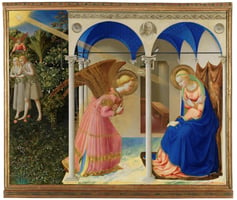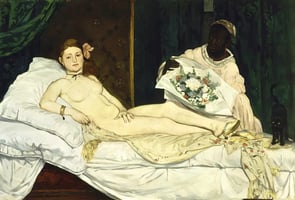Fra Angelico was an Italian painter and Dominican friar who lived during the early Renaissance...
Masaccio
Masaccio, born Tommaso di Ser Giovanni di Simone, was an Italian painter of the early Renaissance period. He is widely considered to be one of the most influential artists of the period, and his work is credited with helping to usher in the Renaissance. Masaccio was born in 1401 in San Giovanni Valdarno, near Florence, Italy. He was the son of a notary, and his family was of modest means.
Masaccio was trained in the workshop of the Florentine painter Masolino da Panicale. He was a student of the renowned sculptor Donatello, and he was also influenced by the work of Giotto and the Sienese school of painting. Masaccio's style was a combination of the traditional Gothic style of painting and the new Renaissance style. He was one of the first artists to use linear perspective in his paintings, and he was also one of the first to use chiaroscuro, a technique of using light and dark to create a sense of depth and atmosphere.
Masaccio's most famous work is the fresco cycle in the Brancacci Chapel in Florence. This cycle of frescoes, which includes The Tribute Money, The Expulsion from the Garden of Eden, and The Resurrection of Christ, is considered to be one of the greatest works of the early Renaissance. The frescoes are notable for their use of linear perspective and chiaroscuro, as well as their lifelike figures and dramatic compositions.
Masaccio also painted several altarpieces, including the Trinity, which is now in the Uffizi Gallery in Florence. This painting is considered to be one of the most important works of the early Renaissance. It is notable for its use of linear perspective and its lifelike figures.
Masaccio died in 1428 at the age of 27, leaving behind a small body of work. His influence, however, was immense. He was one of the first artists to use linear perspective and chiaroscuro, and his work was instrumental in ushering in the Renaissance. His frescoes in the Brancacci Chapel are considered to be some of the greatest works of the early Renaissance, and his altarpiece, the Trinity, is one of the most important works of the period. Masaccio's influence can still be seen in the work of many Renaissance painters, including Michelangelo and Raphael.




